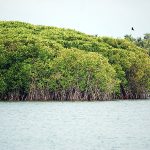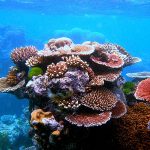What is it?
- An estuary is a coastal area where freshwater from rivers and streams meets and mixes with saltwater from the ocean.
Types of Estuary
- Coastal Plain Estuaries: Formed by rising sea levels flooding river valleys, such as the Chesapeake Bay in the USA.
- Tectonic Estuaries: Created by the sinking of land due to tectonic activity, such as San Francisco Bay in California.
- Bar-Built Estuaries: Separated from the ocean by sandbars or barrier islands, such as Pamlico Sound in North Carolina.
- Fjords: Deep, glacially-carved valleys filled with seawater, commonly found in Norway, New Zealand, and Canada.
Ecological Benefits
- Biodiversity Hotspots: Estuaries support a wide variety of plant and animal species, offering rich feeding grounds for birds, fish, and invertebrates.
- Nutrient Cycling: They play a crucial role in nutrient cycling, trapping sediments and pollutants from rivers before they reach the open ocean.
- Nursery Grounds: Many marine species use estuaries as breeding and nursery grounds, providing a safe environment for young fish and other organisms to grow.
Threats
- Pollution: Runoff containing pesticides, heavy metals, and nutrients can degrade water quality and harm aquatic life.
- Habitat Loss: Urban development, land reclamation, and industrial activities can destroy estuarine habitats.
- Climate Change: Rising sea levels, increased storm frequency, and changes in freshwater flow can disrupt estuarine ecosystems.


